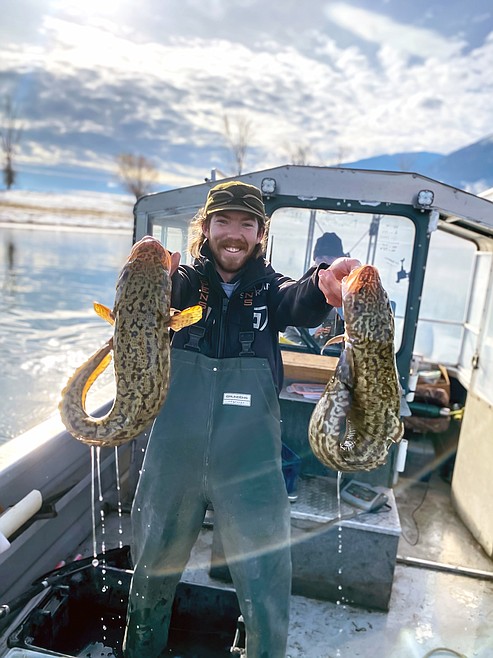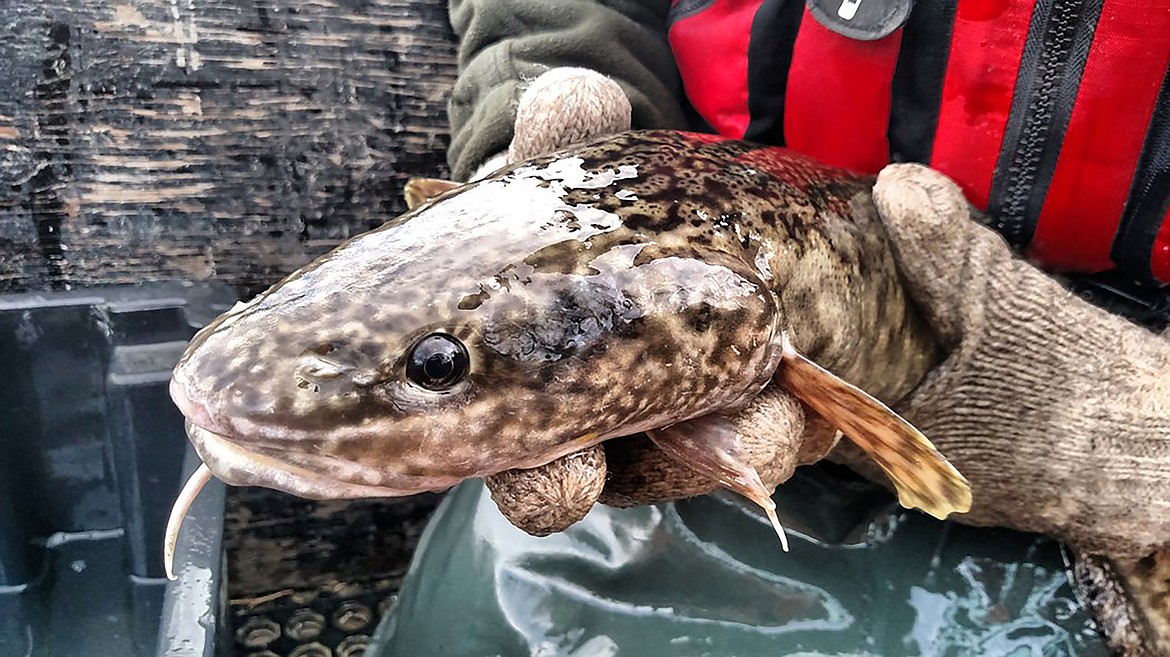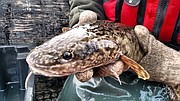Introducing the burbot: 'Kootenai leopard' tastes like lobster
Riddle me this: What lives in the Kootenai River, has the body of a cod, the meat of a lobster and the soul patch of Frank Zappa?
No, that’s not a trick question. There really is a species of freshwater cod that calls the Kootenai River home, but that almost came to an end just 20 years ago. Herein lies the tale of one of Idaho’s strangest fish — the burbot.
What’s the deal with burbot?
Burbot — also known as bubbot, cusk, freshwater cod, ling, lingcod and eelpout — are the only freshwater cod species in North America, and they have a special place in Idaho’s heart. With a face that only a mother could love, these long-bodied, cold-water fish are not your run-of-the-mill sport fish. Burbot have flat heads and long bodies that sprout long pectoral fins just behind their gills. Their back-half is eel-like, with stumpy rounded fins. Burbot have brownish-yellow mottled skin, earning them the nickname “Kootenai leopards” among anglers.
As the name implies, these “leopard-like” fish are predatory and feed during the night. They hang out during the day in deep, slow-moving pools, then seek out food such as crayfish or small fish in shallow water. With the help of inward slanting teeth and a funky little chin whisker called a barbel, burbot have no trouble scoping out and hanging on to prey.
Burbot march to the beat of their own drum in more ways than one, but when it comes to reproduction, things get even weirder. Unlike most freshwater fish that spawn in spring or early summer, burbot prefer to do their business in winter. Some Kootenai River burbot will even migrate from watersheds up in Canada, roughly 75 miles away. Spawning can occur from December to late March, with most spawning happening mid-February through mid-March. Females will lay anywhere between 60,000 to 3 million eggs, each being the size a grain of sand. Burbot will often live to 8 to 10 years old, and even longer in other parts of the world.
Unbeknownst to many Idaho anglers, burbot are a healthy sport fish living right here in our backyard, but it didn’t always use to be that way.
Bouncing back
Just 20 years ago, anglers would be hard-pressed to hook a burbot in Idaho’s Kootenai River. It was estimated that only 50 fish remained in 2004. Thanks to an international, multi-state effort including Idaho Fish and Game, the Kootenai Tribe of Idaho and fisheries biologists from Canada and Montana, Kootenai River’s burbot population recovered.
Research began in the 1990s, with burbot fishing closed down in 1992 because of a decline in numbers. Biologists started using hoop nets — a non-invasive fish trap — to capture, tag and study these fish. Researchers also tagged burbot with PIT tags to track migration.
In 2004, the Kootenai Tribe of Idaho began operating a burbot hatchery in hopes of increasing the population. The Kootenai Tribe took Canadian-spawned burbot eggs back to the hatchery and hatched the tiny eggs from there. Once they reached adolescence, the young fish were released into the Kootenai River.
From the decades’ long research, two important takeaways were found: Burbot weren’t very successful at spawning naturally, and hatchery-raised burbot were surviving but still relied on the hatchery to produce more fish for the population to continue growing.
In 2019, the burbot population finally hit its restoration goal. Partners from the original recovery project are still monitoring burbot populations in the Kootenai River fishery.
You had me at lobster cod
Hit up your buddy to take the rods out on the Kootenai River and its tributaries in mid-winter and you might get a solid “no” before you can even finish your sentence. But tickle their fancy with a prized fresh-water cod that tastes like lobster and it might change their tune.
Anglers will most likely find burbot between mid-February and mid-March when spawning is at its peak, but because burbot fly by night usually, it can be a little challenging to locate them. But before you cast off these unicorn fish as a myth, here are a few fishing tips to help you track down a “Kootenai leopard”:
• Fish shallow flats (5-15 feet deep) at dusk or during the night.
• Try river junctions where smaller streams flow into the mainstem of the river.
• If fishing during the day, try dropping a line in 40-plus foot deep holes. Burbot like to rest in these deep pockets during the day.
• Anglers can also try ice fishing for burbot on Bonner Lake.
• Worms and shrimp work well for bait.
• Use weights to get the line down deep towards the bottom.
Fishing for burbot can be a great way to kick off any angler’s new year. Be sure to dress warm and bring extra layers in case that North Idaho weather takes a turn. Whether you land one of these leopard-like cod or simply use it as a way to get outdoors this winter, burbot fishing is not only a chance to put a delicious, native fish on the supper table, but a true reminder of the persistence and revitalization of one of our state’s fish species.
To learn more about burbot, check out this month’s issue of Wildlife Express. In it you will find all kinds of fun facts, puzzles and more.
• • •
Connor Liess is a public information specialist for the Idaho Department of Fish and Game.



